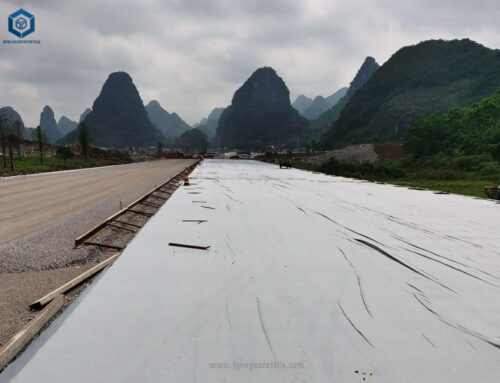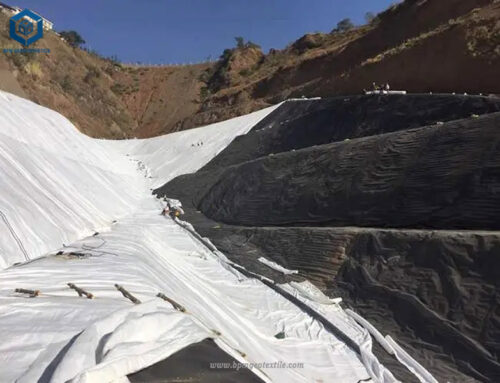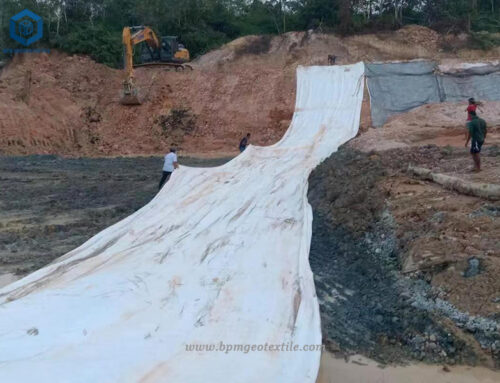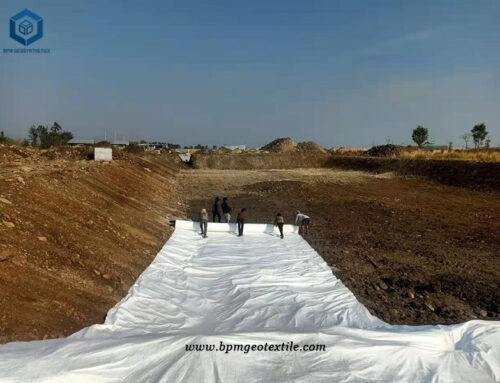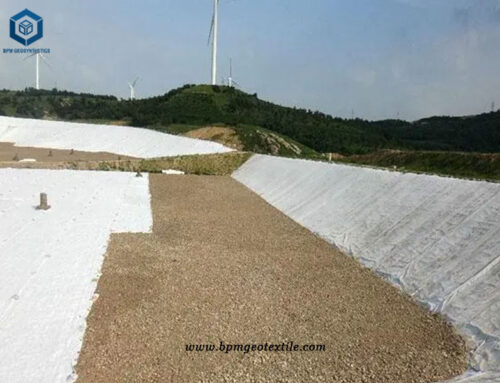PET filament geotextile fabric is a kind of high strength, high modulus and durable geosynthetic material, its main role is used for geotechnical isolation, geotechnical strengthening and geotechnical protection. In tailings treatment, filament geotextile fabrics are usually used for the seepage prevention function of tailings DAMS.
Tailings are solid waste produced in the mine through the beneficiation process, which contains a certain amount of water and fine-grained solid particles, if these tailings leak out, it will cause pollution and damage to the surrounding environment. Therefore, in the construction of tailings dam, measures must be taken to prevent the leakage of tailings and protect the safety of the surrounding environment.
The selection of filament geotextile fabrics as impermeable materials for tailings DAMS is mainly because of its good durability, which can withstand long-term underwater immersion and oxidative corrosion, and its high strength and high modulus can also effectively resist the osmotic pressure and erosion damage of tailings. In addition, the filament geotextile fabric also has good filtration and drainage performance, which can help the tailings dam to quickly remove water, thereby reducing the risk of leakage.
The selection of specifications needs to be determined according to the specific design and use requirements of the tailings dam. In general, the specification of filament geotextile fabric will involve its weight, thickness, width and length and other parameters. In the selection of specifications, it is necessary to consider the size, shape, permeability, water level changes and other factors of the tailings dam, as well as the performance and price of the geotextile used. In general, larger tailings DAMS need to use larger specifications of geotextiles to ensure their anti-seepage effect and service life.
In short, as a high-quality geosynthetic material, filament geotextile fabric has good anti-seepage, enhancement and surface protection properties, and can be effectively applied in tailings treatment. In the selection of specifications, it is necessary to carry out reasonable design and selection according to the specific situation.
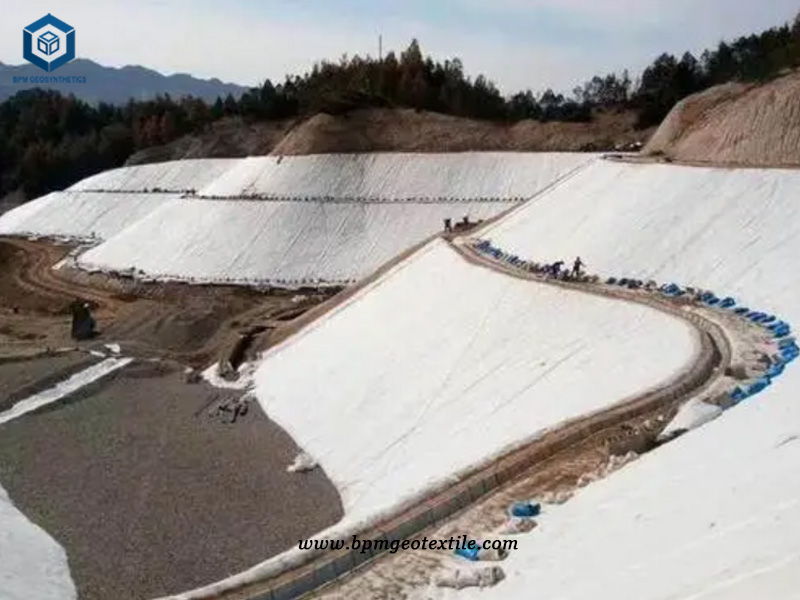
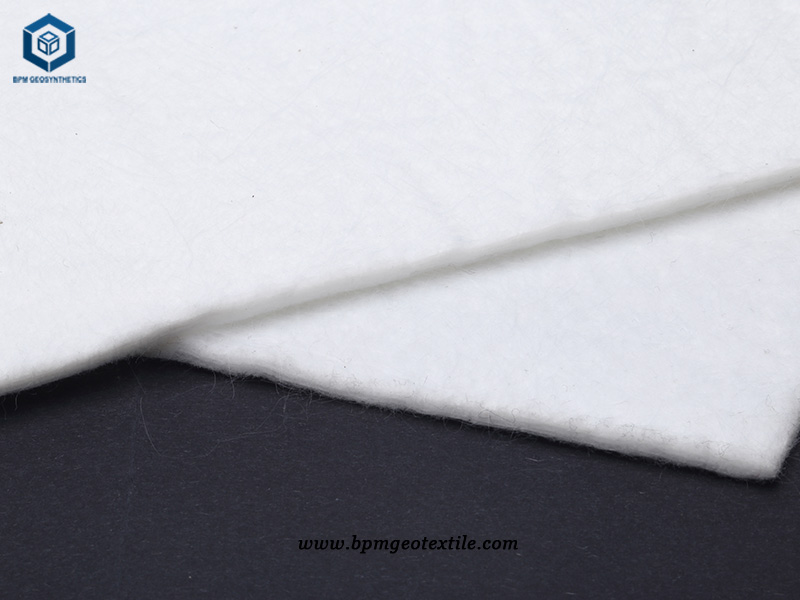
South Africa is a country with rich mineral resources, so there are corresponding needs in mining and tailings treatment. In tailings treatment, filament geotextile fabric is a commonly used geosynthetic material, which is used for seepage prevention, enhancement and protection, etc., and can effectively protect the safety of the surrounding environment.
The South African government project contractor contacted the salesman through the BPM website, they won the bid for the tailings project, they need us to provide the technical indicators of non-woven geotextiles, samples, and third-party testing reports, focusing on alkaline resistance, BPM salesman recommended the filament geotextile fabrics, 500g/m2 according to the requirements of the customer’s project. After receiving the samples, the customer asked a third-party testing company to test various indicators, and finally they were very satisfied with our products and fully met the requirements of the customer. Therefore, after communication on quantity, price, delivery time and payment method, we finally reached a cooperation.
South African tailings customers choose filament geotextile fabrics for the following reasons:
Good durability: filament geotextile fabric has good durability, can withstand long-term underwater immersion and oxidation corrosion, can be used in harsh environments for a long time, suitable for tailings treatment.
Excellent permeability resistance: filament geotextile fabric has good permeability resistance and can effectively resist the osmotic pressure and erosion damage of tailings, thereby reducing the risk of leakage.
High tensile strength: filament geotextile fabric has high tensile strength and can withstand larger loads, which is suitable for strengthening and protecting tailings DAMS.
Convenient construction: the filament geotextile fabric can be customized according to the specific design and use requirements of the tailings dam, convenient construction, quick installation, and improve work efficiency.
In summary, as a high-quality geosynthetic material, filament geotextile fabric has a variety of excellent properties, which is suitable for tailings treatment and can provide effective solutions for tailings customers in South Africa.
Filament non-woven geotextile has excellent heat and light resistance. Even when exposed for a short time in an environment of nearly 20 ° C, its performance is almost unchanged. After a large number of tests and practice proved that polyester long-fiber non-woven geotextile has a variety of natural soil, water and microbial long-term corrosion resistance. The product is mainly used in the following characteristics:
- It can play a permanent isolation role; The soil layer composed of different components and properties can be isolated for a long time and prevent mixing; With frost resistance and load requirements required for construction.
- With good filtration performance and anti-corrosion performance; Water can penetrate in all directions without building up pressure. At the same time, it can prevent soil loss, which is conducive to stability and corrosion resistance.
- With reliable drainage performance; Due to the fluffiness of its structure, it can effectively control the drainage of geotechnical engineering surface.
- With good protection performance; Due to its good puncture, extensibility and fluffiness, it can effectively protect the waterproof layer from potential mechanical damage.
- With reinforcement performance; The fluffiness and high strength improve the overall stability of the project and increase its strength.
Function of filament geotextile fabric
- Isolation. That is, geotextiles are used to isolate building materials with different physical properties (particle size, distribution, consistency and density, etc.) (such as soil and sand, sand and gravel, soil and concrete, etc.). So that two or more materials do not lose, do not mix, maintain the overall structure and function of the material, so that the structure load bearing capacity is strengthened.
- Filtration. When the water flows from the fine-grained soil layer into the coarse-grained soil layer, the good permeability and water permeability of the needled geotextile are used to make the water flow through. And effectively intercepted the soil particles, fine sand, small stone, etc., in order to maintain the stability of soil and water engineering.
- Drainage. Geotextile is a good water conductive material, which can form a drainage channel in the soil structure and remove excess liquid and gas from the soil structure.
- Reinforcement. The use of geotextile to enhance the tensile strength and deformation resistance of soil, enhance the stability of building structure, and improve the quality of soil.
- Protection. The concentrated stress can be diffused, transferred or decomposed effectively to prevent the soil from being destroyed by external forces.
- Closure. Geotextile works with other materials (asphalt, plastic film) to form an impervious barrier in the soil layer. (Mainly used for highway resurfacing, repair, etc.).
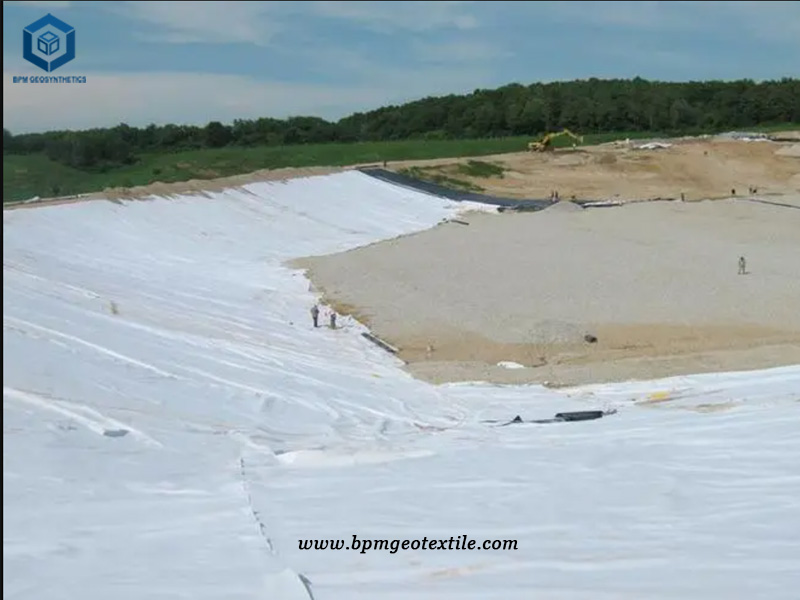
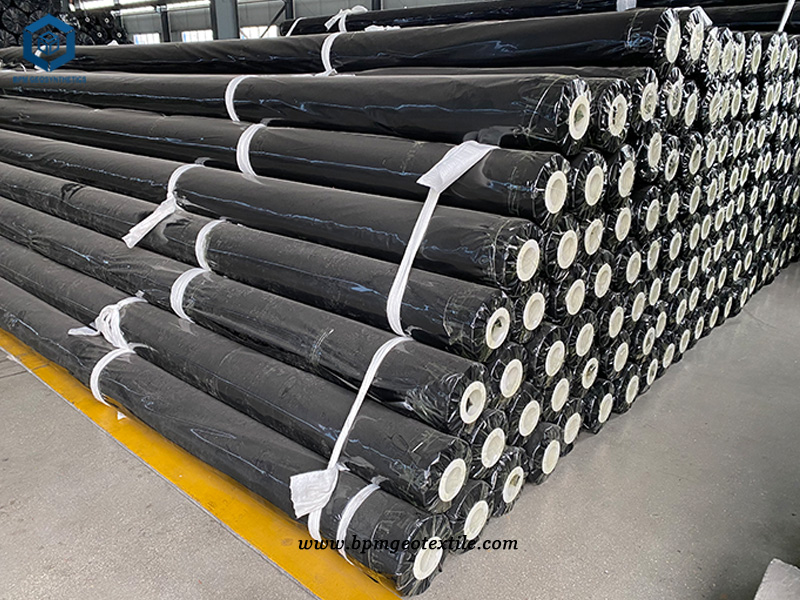
Construction and laying of filament geotextile fabric
- Storage, transportation and treatment of geotextiles. Geotextile rolls should be protected from damage before installation and development. Geotextile rolls should be stacked in a place that is flat and does not accumulate water, and the height of the pile should not exceed four rolls, and the identification piece of the roll can be seen. Geotextile rolls must be covered with an opaque material to prevent UV aging. In the storage process, to keep the integrity of the label and the integrity of the data. Geotextile rolls must be protected from damage during transportation (including on-site transportation from the material storage site to the work site). Geotextile rolls that are physically damaged must be repaired. The geotextile with severe wear cannot be used. Any geotextile that comes into contact with the leaked chemical agent is not allowed to be used in this project.
- Geotextile laying method. Manual rolling; Cloth surface should be smooth, and leave a deformation margin. The installation of the filament is usually by several methods, such as bonding, stitching and welding. The width of stitching and welding is generally more than 0.1m, and the lap width is generally more than 0.2M. Geotextiles that may be exposed for a long time should be welded or stitched.
- Stitching of geotextile. All stitching must be done continuously (for example, spot stitching is not allowed). The geotextile must overlap at least 150mm before overlapping. The minimum stitch distance from the woven edge (the exposed edge of the material) is at least 25mm. The stitched geotextile joint consists of a chain stitch stitch with a single line and a lock. The thread used for stitching should be a resin material with a minimum tension of more than 60N, and have chemical corrosion resistance and UV resistance equal to or exceeding that of geotextiles. Any “missing stitches” in the stitched geotextile must be re-stitched at the affected area.
- Appropriate measures must be taken to prevent soil, particulate matter or foreign substances from entering the geotextile layer after installation. The lapping of cloth can be divided into natural lapping, sewing or welding according to the terrain and the function of use.
About BPM
BPM manufactures and wholesales many types of effective and states of the art geotextile, geomembrane, and other geosynthetics to over 36 countries. BPM geosynthetic products are widely used across a variety of industries including waste containment, water containment, aquaculture, industrial project, energy project and mining projects, etc. BPM main customers are from Australia, France, Sweden, UK, Hungary, New Zealand, Poland, Mexico, Ecuador, Brazil, Pakistan, Bangladesh, Thailand, Vietnam, Malaysia, Indonesia, Singapore, Philippines, Sri Lanka, India, UAE, Saudi Arabia, Qatar, Kenya, etc.
BPM is not only manufacturing best quality geosynthetic products but also providing professional design and installation service. OEM, ODM, custom development and fabrication are also available. If you have any questions or inquiries, please fill and submit the following form, we will reply as soon as possible.

